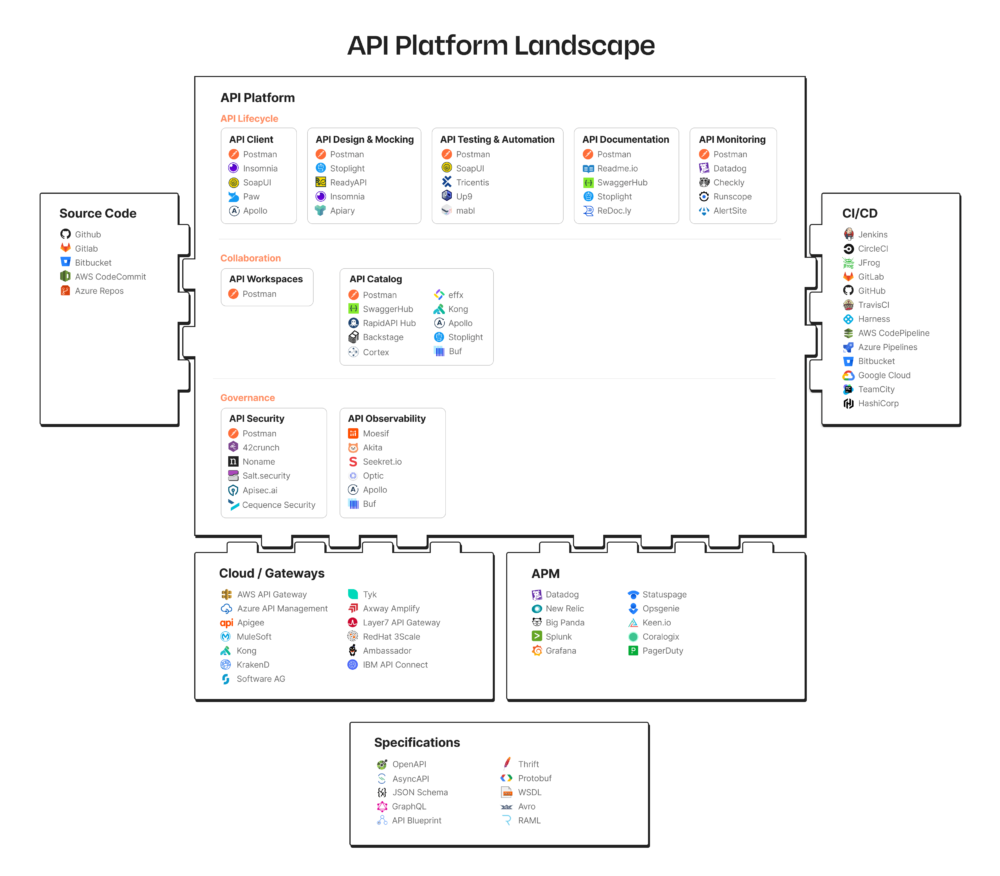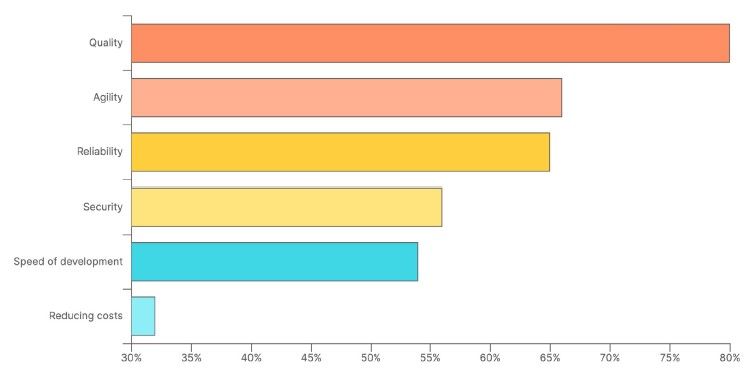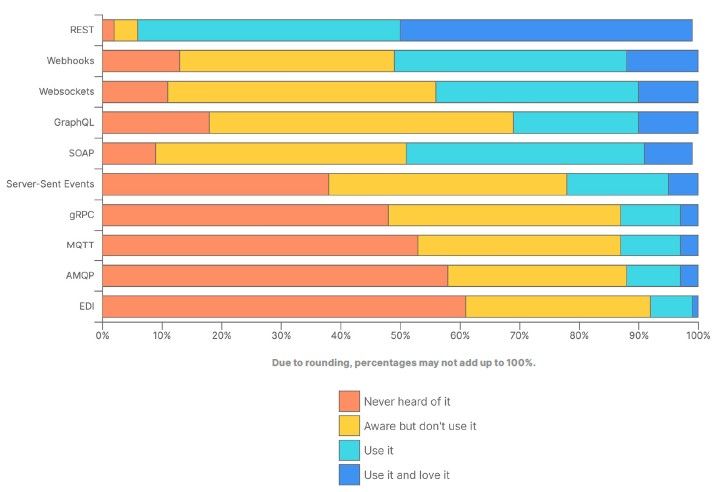Postman Releases 2021 "State of the API" Report, Shows Global Trend Towards API-First Digital Era

Ah, the API. It's not just another fancy TLA (three-lettered acronym) reserved for "MarTalk."
In fact, it's fair to say that the API – Application Programming Interface for the unindoctrinated – is responsible for transforming the CMS and DXP industries. Without APIs, the integrations and connections that live at the heart of modern systems wouldn't exist.
Where would brands like AWS, Stripe, Twilio, and other market-leading technology platforms be without their mountains of APIs calling CRUD or REST functions to trigger events?
The importance of APIs cannot be overstated, nor their profound effect on businesses and organizations. Case in point: the world's biggest SaaS (Software as a Service) companies have all become "API-first" in their architectural practices – where APIs are treated as "first-class citizens" and central their future growth and scalability.
It's worth noting that when we say API, we're referring to web APIs, which are designed to facilitate communication between computers that are connected by the internet. But the acronym itself has much deeper roots: the concept originated in the 1940s, but the terminology caught on in the 1960s and 70s as diverse software systems began to emerge and APIs were purpose-built for specific integrations. This included programming languages, software libraries, operating systems, and even hardware.
Fast forward a few decades, and APIs were suddenly everywhere. So abundant, it seemed, that the mantle of the "The API Economy" became a popular meme.
Around 2014, Gartner predicted that 75% of Fortune 500 enterprises would open an API, ushering in a sort of Golden Age of this newly-minted API Economy. Add a pandemic in 2020 – and a hyper-accelerated rush to digital transformation – and it's rare to find any large organization that isn't leveraging a multitude of APIs.
And why not? There are so many advantages to using APIs. Once again, according to Gartner, APIs make it easier to integrate and connect people, places, systems, data, and algorithms – as well as create new user experiences, share data and information, authenticate people and things, enable transactions and algorithms, leverage third-party algorithms, and build new products, services and business models.
For these reasons (and there are plenty more), Postman – a leading application platform for API testing – embarked on a quest several years ago to gauge the sentiment of API users and builders. Their annual "State of API" report has become a defacto standard for observing and documenting the behavioral changes in this dynamic sector, and we've broken down some of the key findings in their 2021 edition.
The pandemic's impact and the reliance on APIs to respond with digital transformation
For this year's report, Postman surveyed more than 28,000 developers and API professionals who shared their thoughts on various topics, including their organizations' development priorities, how they get their work done, and where they see the industry going. They combined this data with data observed on their Postman API Platform to build a robust picture of the current state – and future – of APIs.
Right off the bat, this year's report focuses on the persistent impact of the Covid-19 pandemic. According to the research, almost two-thirds of respondents stated that the pandemic somewhat or significantly affected their work – and almost half of those noted their organization's changes were supported by APIs. Many respondents said they had to quickly modernize their digital experiences and business systems to serve their customers, while others said they had to pivot their business entirely.
Common areas of investment included e-commerce, customer support via chat and text, and contactless digital systems – all of which relied heavily on APIs. Thanks to the flexibility of many API solutions, organizations were able to successfully implement changes in weeks or months that would have otherwise taken years.
Here are some of the other key findings in the report:
- The API ecosystem is growing: The reliance on APIs to support business and product shifts during the pandemic was reflected through the Postman API Platform, with some significant gains across their key performance metrics.
- Developers are spending more time with APIs: 49% of respondents said that more than half of their organizations' development effort is spent on APIs (compared to just over 40% last year), showing the prevalence of APIs in digital organizations' technology stacks.
- API investments remain strong and steady as more companies embrace the API-first philosophy: An overwhelming 94% of respondents stated the investment of time and resources into APIs would increase or stay the same for the next 12 months.
- The investments in an API-first philosophy are paying off: "API-first leaders" (i.e., respondents who rank themselves a 9 or 10 for embracing an API-first philosophy) produce APIs more quickly, deploy more frequently, have fewer failures, and recover more swiftly when failures occur. For example, 46% of API-first leaders indicated they could recover from API failure in less than an hour, compared to 34% of all respondents.
Tracking the global growth of APIs
Since the 2020 "State of the API" report was released, the Postman API Platform saw significant upsurges that indicate trends across the API ecosystem. Over the past 12 months, Postman users made 855 million API requests (up 56% from the prior year), created 30 million collections (up 39%), and signed in from 234 different countries and geographies—including Antarctica.

The global growth of APIs is driving an ever-evolving landscape of tooling for APIs and development in the API Platforms category. Postman observed that many vendors in this market serve a broad range of needs across the API lifecycle, from design to testing to security.
Additionally, they see vendors offering repositories for source code, API gateways, application performance monitoring, and CI/CD – all of which should integrate with API platforms to achieve optimal results from API initiatives within an organization.
Here is their view of the landscape today:

Which industries are using APIs the most?
It's no surprise that the tech sector is leading the way in API adoption and usage. But business, banking/finance, insurance, and healthcare sectors are following closely.
Further, API adoption is on the rise in nearly every industry. On the business side, there's been a growing trend in e-commerce businesses going headless, separating the frontend "head" from the backend "body." Tapping the omnichannel is at the core of headless commerce, and content in a headless platform is delivered through APIs – allowing it to be displayed across different devices and endpoints.
The banking/finance sector can be one of the slowest industries to adopt new technologies (core banking systems are notorious for outliving their sunset dates), but APIs have been shifting the topology, making it less cumbersome to embrace change. With more than 62% of Americans using digital services over physical bank branches, APIs are making it easier for financial systems to securely meet the needs of consumers while optimizing and streamlining internal processes.
Traditional banks are also facing fierce competition from fintech. While traditional banks offer many services, smaller financial technologies tend to specialize in specific services, disrupting the monolithic banking industry. Investment trends favor small fintech startups working on more accessible, customer-centric processes that are much less expensive than traditional banks – and are built on APIs.
The emergence of blockchain and cryptocurrencies are also challenging the status quo. Both traditional and fintech companies should continue to embrace APIs as a bridge for connecting these emerging technology areas.

What it means to be API-first in a new digital era
What's abundantly clear from Postman's research is that many teams and organizations are fully embracing the "API-first" philosophy.
In fact, on a scale of 1 to 10 for embracing an API-first strategy, 66% of this year's respondents ranked themselves as a "5 or higher." This is up from 62% in 2020.
On that same scale, 8% of respondents ranked themselves as a "9 or 10." Postman refers to these respondents as the market's "API-first leaders."
Understanding the philosophy of being API-first requires some deeper insight into user behaviors. According to research conducted by Forrester Wave, mobile will still be the key orchestrator for a user's journey – and one that's non-linear.
To help us understand the user journey with greater intimacy, Forrester created a diagram for the 3D-connected consumer that features devices, platforms, and channels:

Here's where the API-first approach comes into play – where brands can be channel-agnostic as consumers use a combination of devices, platforms, and channels.
Development Priorities
Postman asked respondents to identify the top priorities for their development teams and organizations, and there was a clear winner: quality, coming in at 80%.
Agility, reliability, security, and development speed were also important to more than half of the respondents. "API-first leaders" were even more likely to cite quality, reliability, agility, and security as priorities.

API technologies
As far as architectural styles for APIs are concerned, a sweeping majority of respondents (94%) use REST; of those, nearly half said that that they not only use REST, but that they "use it and love it."
The majority of participants are conscious of webhooks, WebSockets, GraphQL, and SOAP, but none of these have seen the same level of adoption as REST among the participants.

Specifications
Postman also asked professionals which API specifications they know, use, and prefer – and JSON Schema was by far the top specification in use cited by three-quarters of respondents. Swagger 2.0 (54%) and OpenAPI 3.0 (40%) were the next most popular specifications.
Future Technologies
Postman asked the question, "What technologies are you most excited about using over the next year?" Microservices (58%) and Kubernetes (50%) led the answers, just as they did in 2020.
Rounding out the top five are containers (46%), serverless architecture (44%), and GraphQL (35%).

Conclusion
There's a lot to unpack in Postman's 2021 "State of the API" report, and it's worth your time to dive in head-first. Kudos to their content team for making the research easy to digest and incredibly applicable and relevant.
The big takeaway is astoundingly clear: the pandemic continues to change everything, and the world is responding with APIs. To reiterate, two-thirds of respondents stated that the pandemic somewhat or significantly affected their work – and for many organizations, they played a key role in keeping the businesses operating.
As a recap, here are a few highlights from the report where APIs were the undisputed "heroes" of the digital stack:
- Organizations adopted new channels or enhanced existing channels to reach and serve customers in a pandemic world, leveraging APIs to make it all happen.
- Respondents told Postman that common areas of investment included e-commerce, customer support via chat and text, and contactless digital systems – all of which relied on APIs.
- Many respondents had to adjust to major shifts in market demand, with some businesses completely pivoting their product offerings. For many, product rollouts relied on APIs, and organizations achieved what would typically take years in a matter of weeks or months. Some businesses were even born in the pandemic to meet new needs.
- Working from home presented new challenges for many organizations. APIs and integrations with internal systems helped solve these challenges by automating or enabling tasks that used to happen in person – such as communication, attendance, reporting, and project management.
- Some of the most frequently cited innovations came from healthcare, with many organizations needing to digitize and automate workflows and run telemedicine strategies. In both cases, APIs were essential to powering these solutions.
No one has a crystal ball, but Postman's data and insights around APIs are proving incredibly useful when it comes to forecasting the future. Based on what we've seen in 2021, it's safe to say that APIs continue to deliver – come rain, or sleet, or snow... or pandemics.
If you'd like to read Postman's full report, you can download it here.